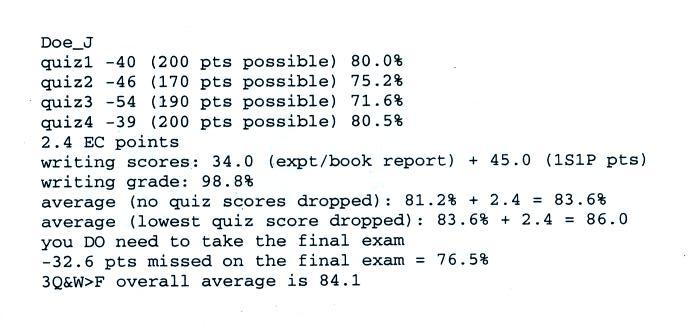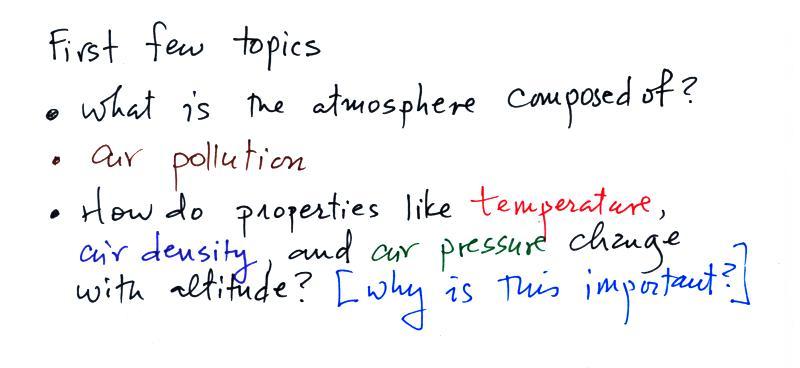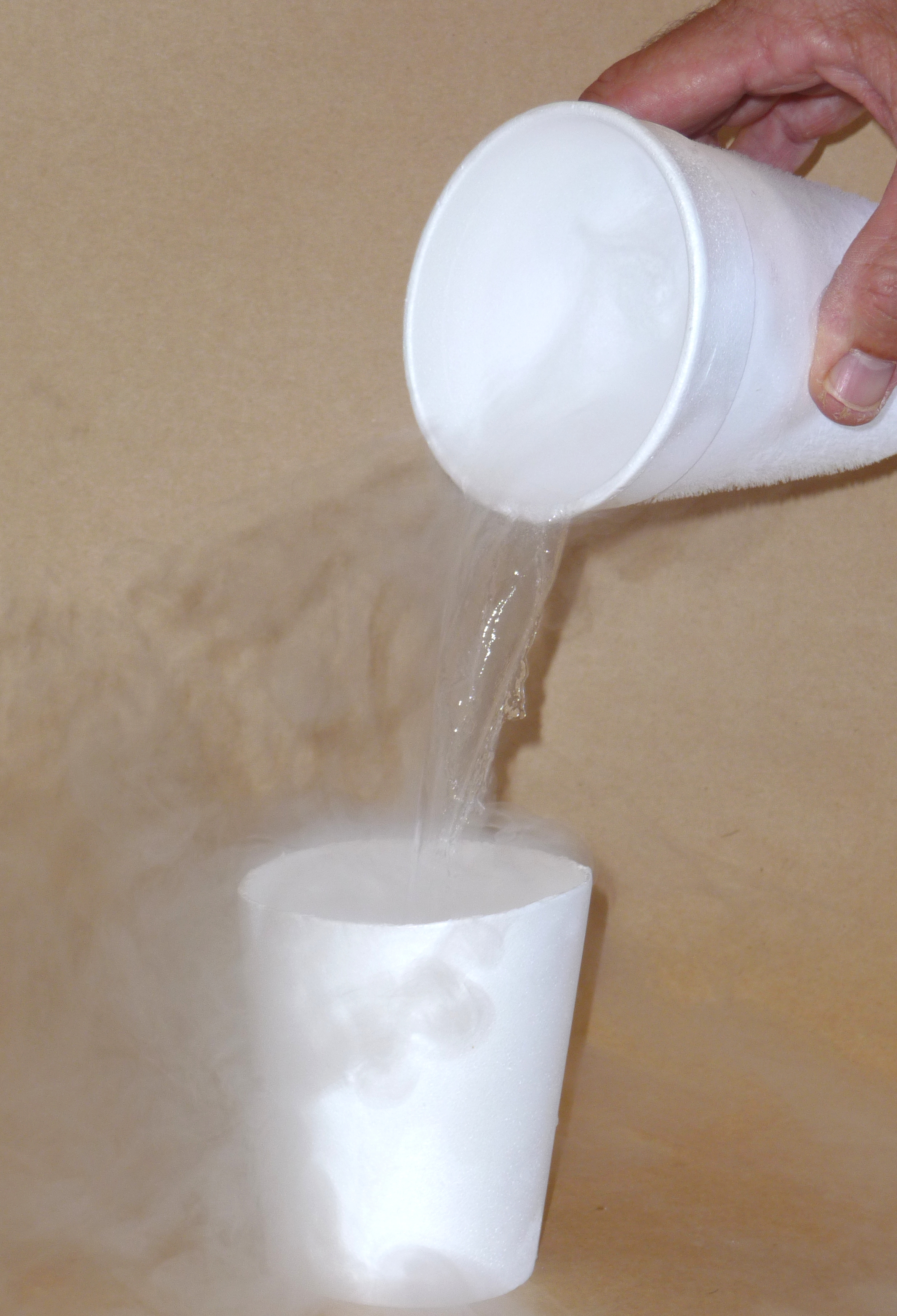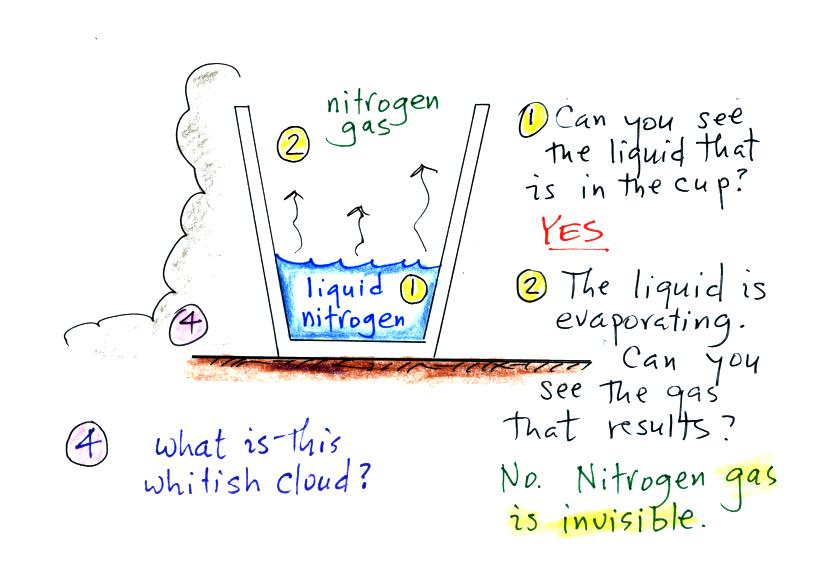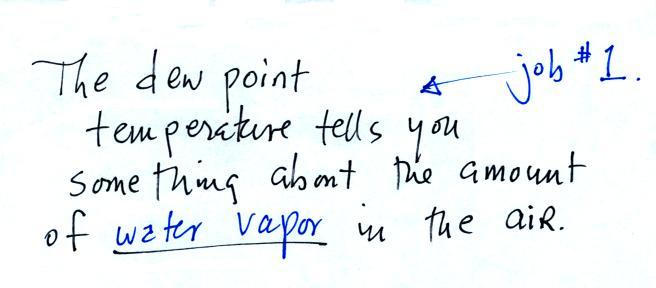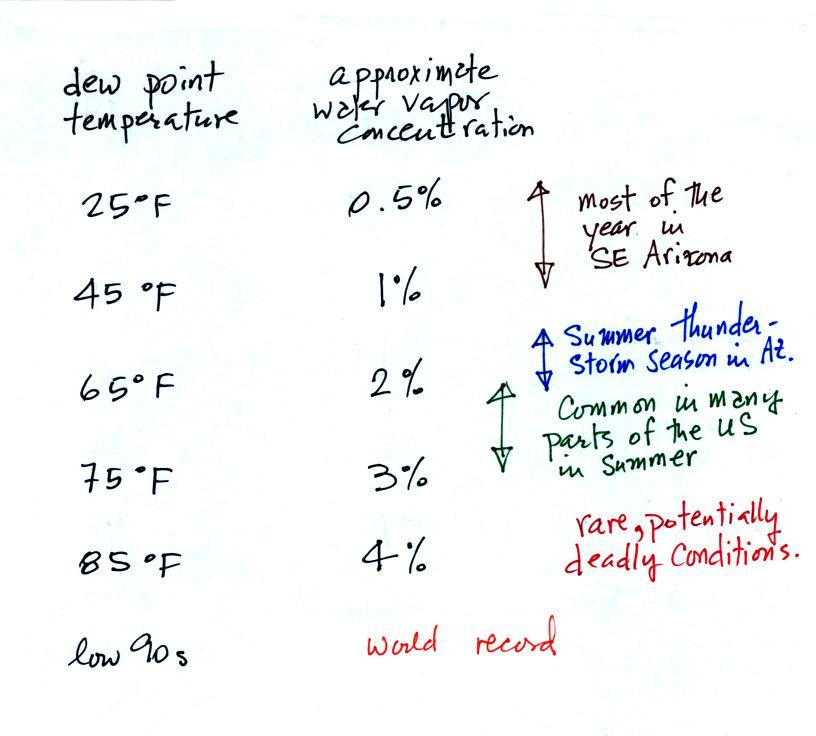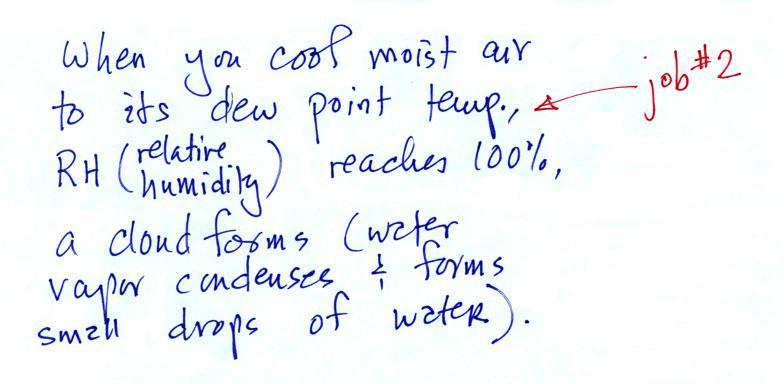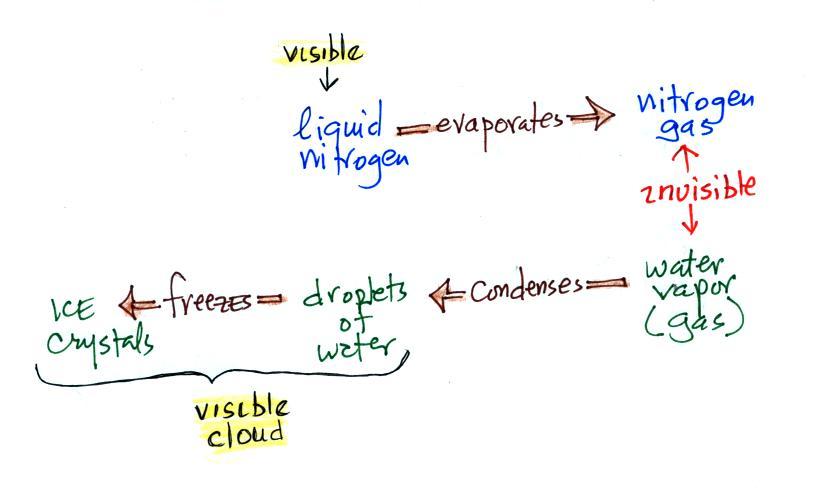Tuesday Aug. 23, 2011
click here to
download today's notes in a more printer friendly format
Welcome to ATMO 170A1 - Introduction to Weather and
Climate. This course used to be called NATS 101, there's a good
chance I'll keep calling it by that name.
Some Mariachi music seemed
like just the thing for the
first day of class. We had time for 3 selections "48 Roses", "Norteno Lights",
and "Poverty's King"
from
Mariachi
El Bronx. For the last couple of
years I have
been filling
the few minutes before class with some
kind of music, often local talent. Music won't ordinarily take up
any actual
class
time. Hopefully you'll like at least some of the
selections. Comments and ideas from students are welcome.
Today was the
first day of class.
We first briefly discussed the Course
Information
handout. Please
read
through
that information carefully and let me know if you have any
questions.
A textbook is not required for this class. If you want
to get a more complete picture of the subject than we will have time to
do in class, you might want to purchase one of the textbooks that
are being used in
the other NATS 101 sections. Or if you'd like to borrow one of
the copies
of
introductory
level
textbooks that I have in my office, you'd be welcome to do
so. Otherwise you
should be able to do perfectly well in the class by reading the online
notes and any other suggested online sources.
A set of photocopied ClassNotes (available in the Student
Union Bookstore) is required. You should try to purchase a copy
as soon as you can because we will probably be using
some of
them in class later this week. If
you know someone with
photocopied ClassNotes from the Spring 2011 or Fall 2010 classes they
should work fine this semester also.
This class does not yet appear on d2l (though that is something I
should probably try to do).
Your grade
in this class will depend on your quiz scores, how much
extra credit you earn (from optional take home and in class
assignments),
your
writing
grade,
and
(perhaps)
your
score
on
the
final
exam. A sample grade report from the Spring 2011 Nats 101 class
is shown below.
Don't
worry about all the details at this point. Note that this
(fictitious) student earned a solid B in the class with a C average on
the quizzes and a C on the Final
Exam. A high writing grade and the extra credit points are what
that possible. The student would have ended up with a C
otherwise. So be sure to do the writing.
We next had a look at the Writing
Requirements handout. The first half of your
writing grade is an experiment
report. You should be thinking about which of the experiments
listed on the handout you would like to do (you only need to do one of
the experiments). I'll probably be bringing a signup sheet to
class on There aren't enough
materials
for
everyone to do the same experiment. Distribution of the materials
for
the Experiment #1 will probably begin in class on Friday.
There
are
Book
Report
and
Scientific
Paper Report options for students
that absolutely refuse to do an experiment.
The
so-called One Side of One Page (1S1P) reports make up the second
part of your writing grade. Topics will appear periodically on
the class webpage during the semester. You will be allowed to
write reports on up to 4 topics. As you write reports you will
earn points (the exact number of points will depend on the
topic). You can earn
up to 45 points. Bonus assignments will also appear during the
semester. You can write as many bonus assignment reports
as you want. They won't allow you to earn more than 45 1S1P pts,
but they will get you to the 45 pt. total more quickly. Please read
through the information on the writing
requirements handout and let
me know if you have any questions.
Here's the first picture of the day, something that will appear
occasionally in this class.
This is Sabino Canyon located in NE Tucson. The creek has been
dry most of the summer but the water reappeared last Friday after an
impressive thunderstorm on Thursday. The water was
running over the bridges on Friday but had dropped several inches by
Sunday.
We did cover a little course material in class today just so you
can get an idea of how that will work. If
we
were
using a textbook it would probably begin with an introductory
chapter that described the atmosphere. Here are some of the
topics we'll be looking first in this course.
We'll
just
have
time
today
to
look
at
the first question, the composition of
the atmosphere. Here are a few questions to get you thinking
about the air around you.
Can
you
smell
air?
I
don't think you can smell or taste air (air containing nitrogen,
oxygen, water vapor, argon and carbon dioxide) unless air pollutants
are
present. And I suspect our sense is sensitive enough for us to
detect certain air pollutants even when
their concentration is very small.
Can
you
see
air?
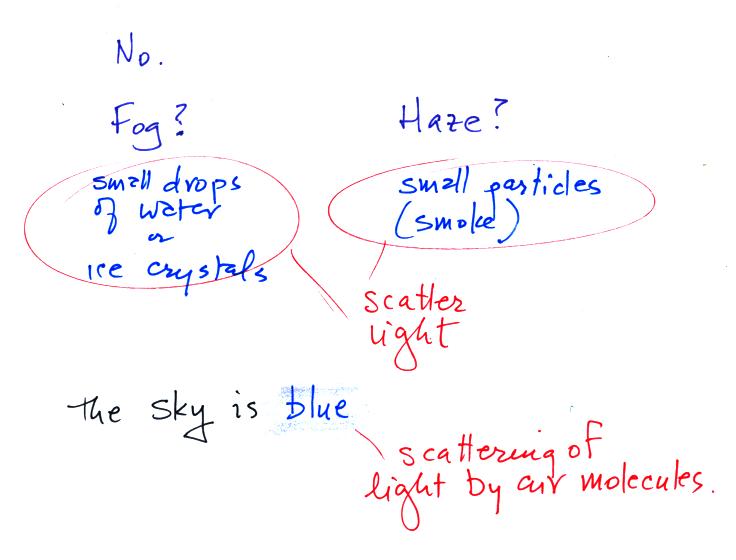
This is a little more detailed
answer to this question than was given in class. Air is
normally clear, transparent, and invisible (that would be true of the
air in the
classroom). Sometimes the air looks
foggy or hazy. In these two cases you are seeing the effects of
small water droplets or ice crystals (fog) or small particles of dust
or smoke (haze). The particles themselves may be too small
to be seen with
the naked eye but are visible because they scatter (redirect)
light. Scattering is a pretty important concept and we will learn
more about it in a week
or two.
The atmosphere isn't actually clear. When sunlight shines
through the atmosphere the sky appears blue. I didn't mention
this in class. This is a little more
complicated form of scattering of sunlight by air molecules.
Can
you
feel
air

It
is harder to answer this question. We're always in contact with
air. Maybe we've grown so accustomed to it we aren't aware of how
it feels. We can certainly feel whether
the air is hot or cold, but that have more to do with energy exchange
between us and our surroundings. We will see that air pressure is
pressing on
every square
inch of our bodies with 12 or 13 pounds of force. If that were to
change suddenly I'm pretty sure we'd feel it and it would probably
really hurt.
What
are
the
5
most
abundant
gases
in
air?
Let's start with the most abundant gas in the
atmosphere.
I poured some of this same material (in liquid form) into a styrofoam
cup. Here's a photo
You can see the liquid, it's clear, it looks like water.
Note
the
cloud
surrounding
the
cup.
At least one
student (probably many more) knew that this was nitrogen. We'll
use
liquid
nitrogen
in
several
class
demonstration
this semester.
The liquid nitrogen is evaporating. Can you see the nitrogen
gas? The answer is no, nitrogen
gas is invisible as are
most of the
other gases in the atmosphere. The whitish cloud is something
else, it's not nitrogen gas.
Nitrogen was
discovered in 1772 by Daniel Rutherford (a Scottish
botanist). Atmospheric nitrogen is relatively unreactive
and is sometimes used to replace air in packaged foods to preserve
freshness.
Oxygen
is
the second most abundant gas in the atmosphere. Oxygen is the
most abundant element (by mass) in the earth's crust, in ocean water,
and in the human body. Here's
a
photograph of liquid oxygen.
It has a (very faint) blue
color (I was pretty disappointed when I saw the picture the first
time because I had imagined the liquid oxygen might be a deep vivid
blue).
When heated (such as in an automobile engine) the oxygen and
nitrogen in air react
to form compounds such as nitric oxide (NO), nitrogen dioxide (NO2),
and
nitrous
oxide
(N2O). Together as a group these are
called oxides of nitrogen; the first two are air
pollutants, the
last is a greenhouse gas. More about those in class in the next
day or two.
Here are the 5 most abundant gases
in the earth's atmosphere.
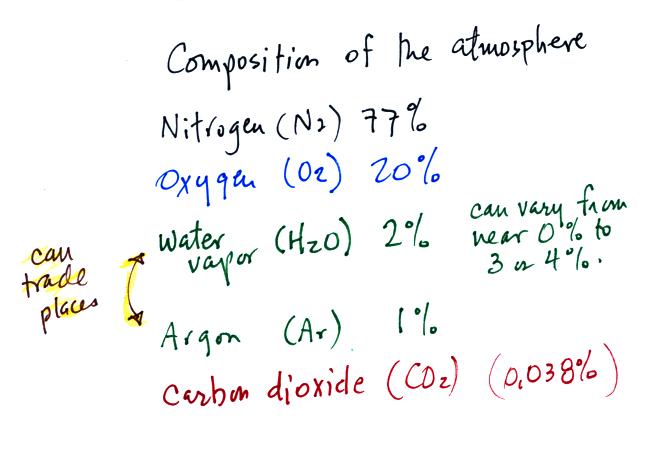
Water vapor and argon are the 3rd
and 4th most abundant
gases in the
atmosphere. The concentration of water vapor can vary from near
0% to as high as 3% or 4%. Water vapor is, in many locations, the
3rd
most abundant gas in air. In Tucson most of the year, the air is
dry enough
that argon is in 3rd position and water vapor is 4th.
Water vapor, a gas, is
invisible. Clouds are visible because they are made up of small
drops of liquid
water or ice crystals. We can see clouds even though the
individual water droplets are too small to be seen because they scatter
light. Water is the only compound that exists
naturally in solid, liquid, and gaseous phases in the atmosphere.
Argon is an unreactive noble gas (helium, neon, krypton, xenon, and radon are also inert gases).
Noble gases are often used in "neon
signs."
Here's a little more
explanation (from Wikipedia)
of
why
noble
gases
are
so
unreactive.
Don't worry about all these
additional details. The noble gases have full valence electron shells. Valence electrons
are the outermost electrons of an atom and are normally
the only electrons that participate in chemical bonding.
Atoms with full valence electron shells are extremely stable and
therefore do not tend to form chemical bonds and have little tendency
to gain or lose electrons.
Water
plays an important role in the formation of
clouds,
storms,
and weather. Meteorologists are very interested in knowing and
keeping track of how
much water vapor is in the air at a particular place and time.
One of the variables they use is the dew point temperature. The
value
of
the
dew
point
gives
you
an
idea
of
how
much
water
vapor
is
actually
in
the air. The
higher the dew
point value, the more water vapor the higher the water vapor
concentration.
The chart below gives a rough
equivalence between dew point
temperature and percentage concentration of water vapor in the air.
Air temperature will
always be equal to or warmer than
the dew point
temperature. Experiencing 80o dew points would be very
unpleasant (and possibly life threatening because your body might not
be able to cool itself). Click
here
to see current dew point temperatures across the U.S. Don't worry
about remembering all these numbers. Just remember that the
higher the dew point temperature the more water vapor is in the air and
vice versa. And here's an
interesting
link I just found concerning unusually high, sometimes
record setting dew point temperatures.
I might not
have mentioned the second job of the dew point temperature
We can go back to the cup of liquid nitrogen and see this
happening. We'll concentrate on points 3 and 4 in the class
handout.
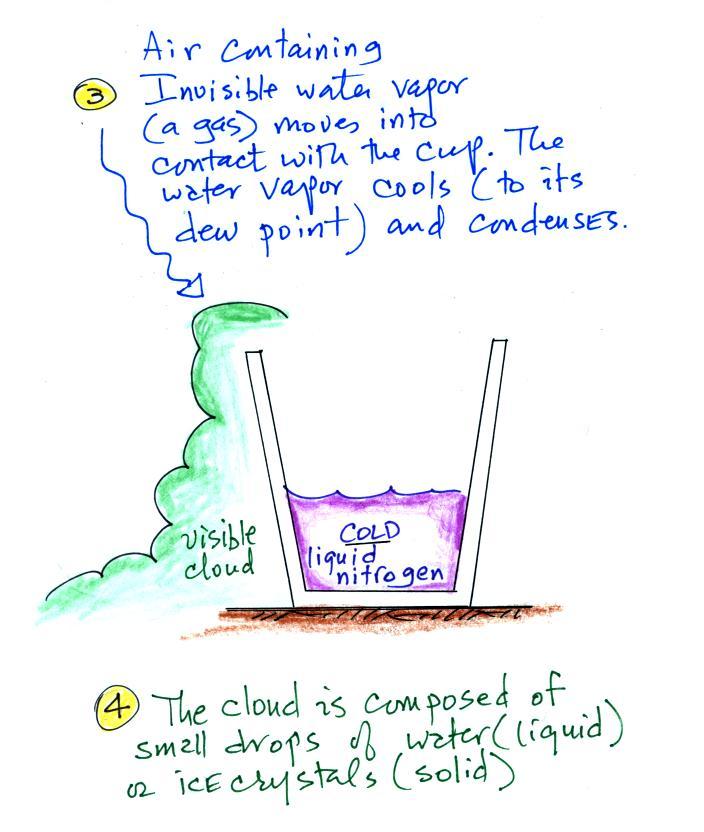
The cloud came from moisture in the
air. It's not different from the clouds you see forming in the
atmosphere outdoors. The cloud was not made of nitrogen gas
(which is
invisible). Note also that a certain amount of "artistic" license
was used in the figure above (and in many of my figures); liquid
nitrogen is not purple and water
clouds are not green.
Here's a summary of what we've seen happen in class today.
